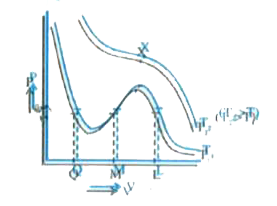Assertion: Elevation in boiling point is inversely proportional to lowering of vapour pressure for dilute solutions.
Reason: Lowering of vapour pressure is directly proportional to mole fraction of solvent.Solution in Telugu
Both Assertion and Reason are true and Reason is the correct explanation of Assertion
Both Assertion and Reason are true and Reason is not the correct explanation of Assertion
Assertion is true but Reason is false
Both Assertion and Reason are false
The correct Answer is:D
Step by step video, text & image solution for Assertion: Elevation in boiling point is inversely proportional to lowering of vapour pressure for dilute solutions. Reason: Lowering of vapour pressure is directly proportional to mole fraction of solvent. by Chemistry experts to help you in doubts & scoring excellent marks in Class 12 exams.
Topper's Solved these Questions
- BOOK - AAKASH SERIESCHAPTER - SOLUTIONS EXERCISE - Objective Exercise -3 (PREVIOUS NEEET/AIPMT )24videos
SOLUTIONS
- BOOK - AAKASH SERIESCHAPTER - SOLIDS STATEEXERCISE - PRACTICE EXERCISE63videos
SOLIDS STATE
- BOOK - AAKASH SERIESCHAPTER - STATES OF MATTER EXERCISE - ADDITIONAL PRACTICE EXERCISE -PRACTICE SHEET (ADVANCED) (LINKED COMPREHENSION TYPE QUESTIONS) (PASSAGE- IV)2videos
STATES OF MATTER
Similar Questions
A solution has a 1 : 4 mole ratio of pentane to hexane. The vapour pressures of pure hydrocarbons at 20∘C are 440 mm Hg for pentane and 120 mm Hg for hexane. The mole fraction of pentane in vapour phase woule be
01:54View SolutionWhich of the following is considered as true amorphous solid
02:01View SolutionAt a particular temperature and pressure for a real gas Van der Waal's equation can be written as:
(P+aV2m)(Vm−b)=RT

where Vm is molar volume of gas. This is cubic equation in the variable Vm and therefore for any single value of P & T there should be 3 values of Vm. Which are shown in graph as Q, M and L.
As temperature is made to increase at a certain higher temperature the three values of Vm becomes identical. The temperature, pressure & molar volume at point X are called Tc, Pc & Vc for real gas. The compressibility factor in terms of Pc, Vc and T is called Zc.
The expression of Van dcr Waal's constant 'a' can be given as02:20View SolutionThe relative lowering of vapour pressure in case of dilute solution is directly proportional to:
06:35View SolutionStatement Addition of a non-volatile solute causes a depression in vapour pressure. Explanation vapour pressure of a solution is directly proportional to mole fraction of solvent.
02:45View SolutionAt room temperature the mole fraction of a solution is 0.25 and the vapour pressure of the solvent is 0.80 atm. Then the lowering of vapour pressure is
View SolutionRelative lowering in vapour pressure of solution containing non-volatile solute is directly proportional to mole fraction of solute. Above statement is
02:02View SolutionThe lowering of vapour pressure of a solvent by the addition of a non- volatile solute to . It , is directly proportional to _______.
03:07View SolutionAssertion (A) : The vapour phase is always richer in the component which is less volatile.
Reason (R) : The relative lowering of the vapour pressure of a solution is proportional to mole fraction of the solvent.02:18View SolutionAt a given temperature
(a) Vapour pressure of a solution containing nonvolatile solute is proportional to mole fraction of solvent
(b) Lowering of vapour pressure of solution containing nonvolatile solute is proportional to mole fraction of solute
(c) Relative lowering of vapour pressure is equal to mole fraction of solute03:13View SolutionWhen some amount of non-volatile solute is dissolved in a solvent to prepare a dilute solution, the vapour pressure of the solvent is lowered and it is directly proportional to the mole fraction of solvent in the solution . Relative lowering in vapour pressure is equal to mole fraction of solute . Elevation in boiling point of solvent is a collgative property like lowering in vaour pressure of solvent in solution , K_(b) i.e., molal elevation constant is calculated by the formula, K_(b)=DeltaT_(b)// molality and also by the expression, K_(b)=RT_(b)^(2)//1000l_(v) where T_(b) is boiling point of solvent and I_(v) is latent heat of vapourisation for 1 gm solvent . Abnormal elevation is boiling point =iX elevation in boiling point in ideal solution where i=van't Hoff factor Lowering in vapour pressure in an experiment was found to be x mm of Hg. It is : Lowering in vapour pressure in an experiment was found to be x mm of Hg. It is
03:08View SolutionWhen some amount of non-volatile solute is dissolved in a solvent to prepare a dilute solution, the vapour pressure of the solvent is lowered and it is directly proportional to the mole fraction of solvent in the solution . Relative lowering in vapour pressure is equal to mole fraction of solute .
Elevation in boiling point of solvent is a collgative property like lowering in vaour pressure of solvent in solution , Kb i.e., molal elevation constant is calculated by the formula, Kb=ΔTb/ molality and also by the expression, Kb=RT2b/1000lv where Tb is boiling point of solvent and Iv is latent heat of vapourisation for 1 gm solvent . Abnormal elevation is boiling point =iX elevation in boiling point in ideal solution where i=van't Hoff factor
Relative lowering in vapour pressure :01:46View SolutionThe lowering of vapour pressure of a solvent by the addition of a non- volatile solute to . It , is directly proportional to _______.
03:08View SolutionThe relative lowering of vapour pressure in case of dilute solutions is directly proportional to :
01:46View SolutionThe lowering of vapour pressure of a solvent by the addition of a non-volatile solute to it , is directly proportional to :
02:06View Solution

